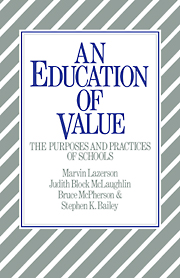Preface
Published online by Cambridge University Press: 05 June 2012
Summary
From September to June each year, some 40 million young people are enrolled in the nation's public schools – kindergarten through twelfth grade. Patently, and in spite of dire claims to the contrary, public schooling is valued. If it were not valued, the nation's citizens would not invest about $127 billion annually in its maintenance. Current expenditures for public schools, even allowing for inflation, have more than tripled in the past twenty-five years. By 1987 they will be at least four times the 1957 expenditures. And, at least in recent years, in most parts of the country these increases have occurred in the face of declining school enrollments.
What is remarkable about the present condition of American public schooling is not the shrillness of public criticism, or the bog of professional despair, but the unfailing continuity of public support. Whatever the doleful criticisms and dire forebodings, public schools remain stable institutions. Viewed historically, they are a remarkable success. Since World War II alone, the percentage of 17-year-olds who graduate from high schools each year has risen from 48% to 75%, from just over 1 million in 1946–7 to over 3 million in the early 1980s – an extraordinary achievement. An increasing number of these youths have come from backgrounds that are educationally and culturally disadvantaged. Schools, to paraphrase Winston Churchill, have brought a growing percentage of the school-age population “under the Constitution.”
- Type
- Chapter
- Information
- An Education of ValueThe Purposes and Practices of Schools, pp. xi - xviPublisher: Cambridge University PressPrint publication year: 1985

